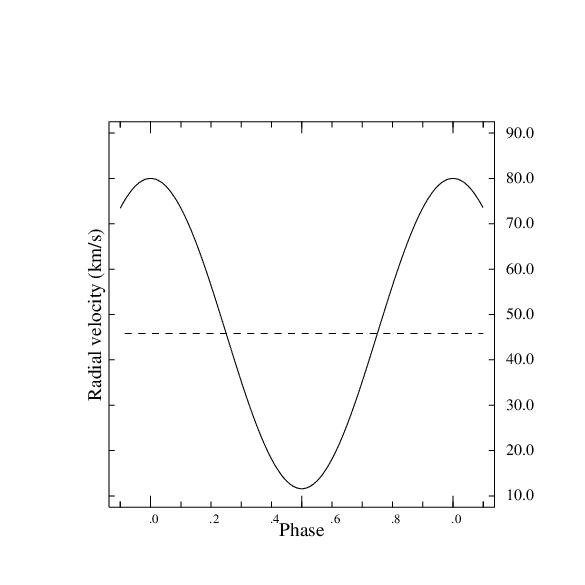Basic data (System:470)
| C1900.0 | : | 07370+2907
|
|---|
| C2000.0 | : | 074318726+28530063
|
|---|
| Comp. | :
|
|---|
| Magn. | : | 4.25(V)
|
|---|
| Spect. | : | K1III
|
|---|
Identifiers:
| Bayer $\sigma$ Gem | BD +29 1590 | GAIADR2 878467085734742400 | GAIADR3 878467085734742400
|
| HD 62044 | HIP 37629
|
Orbit
| Element | | Value | Std. dev.
|
|---|
| Period (d.) | : | 19.605 |
|
|---|
| T0 (xJD-2,400,000.0) | : | 18962.43 |
|
|---|
| Reference T0/epoch | : | JD
|
|---|
| Eccentricity | : | 0.0 |
|
|---|
| omega primary (deg.) | : | 0.0 |
|
|---|
| K1 (km/s) | : | 34.2 |
|
|---|
| K2 (km/s) | : | |
|
|---|
| V0 (km/s) | : | +45.8 |
|
|---|
| sigma residuals primary | : |
|
|---|
| sigma residuals secondary | : |
|
|---|
| #RV primary | : |
|
|---|
| #RV secondary | : |
|
|---|
| Grade | : | 3.0
|
|---|
| Contributor | : | DAO
|
|---|
| Status | : | PUB
|
|---|
| Bibcode | : | 1936ApJ....84...85L
|
|---|
|
|---|
|
|
|---|
| Derived quantities (on the fly, from the above quantities) |
|---|
|
|---|
|
|
|---|
| a1sini (km) | : | 9.21991e+06 | 0
|
|---|
| f(m) (sol.mass) | : | 0.0815656 | 0
|
|---|
Note
Luyten's recomputation of the elements with an assumed circular orbit (epoch
T0) is preferred to W.E. Harper's original solution (Publ. Dom. Obs., 1, 265,
1911) because Harper had to fix the value of T. Later, he revised the period to
19.603d (Publ. Dom. Astrophys. Obs., 6, 224, 1935). The star is now considered
a non-eclipsing member of the RS CVn group and varies by nearly 0.2m in a
period close to, but not identical with, the orbital period. Extensive
photometric observations have been discussed and published by R.E. Fried et al.
(Astrophys. Space Sci., 93, 305, 1983). The spectrum at H-alpha has been
observed by S.E. Smith and B.W. Bopp (Astrophys. Letters, 22, 127, 1982) and by
K.G. Strassmeier, S. Weichinger and A. Hanslmeier (Inf. Bull. Var. Stars, No.
2937, 1986). Variations in the spectrum have been noted by Z. Eker (Bull. Am.
Astron. Soc., 17, 588, 1985). The star is a possible radio source (S.R.
Spangler, F.N. Owen and R.A. Hulse, Astron. J., 82, 989, 1977) and a known
X-ray source (J.P. Pye and I.M. McHardy, Bull. Am. Astron. Soc., 12, 855,
1980). There is a 10.8m `companion' at over 180" separation.
Plot

Encapsulated PostScript file
T. Merle

